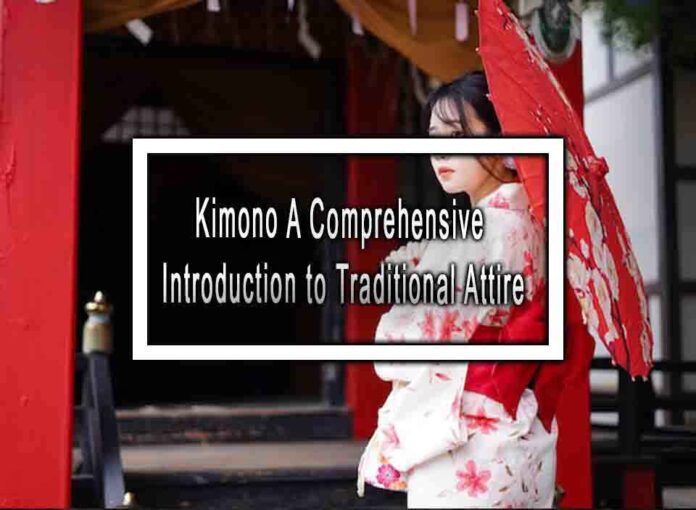A kimono is a traditional Japanese garment known for its elegance, artistry, and cultural significance. This comprehensive introduction to the kimono covers its history, types, components, wearing etiquette, and cultural significance.
1. History of the Kimono:
- The kimono has a rich history dating back over a thousand years. Originally derived from Chinese clothing, it evolved into a unique Japanese garment with distinct cultural significance.

2. Types of Kimonos:
- There are several types of kimonos, each designed for specific occasions and genders:
- Furisode: A long-sleeved kimono worn by young, unmarried women on formal occasions.
- Kurotomesode: A formal, black kimono often worn by married women during weddings.
- Iromuji: A solid-colored, non-patterned kimono suitable for various formal events.
- Yukata: A casual, lightweight kimono worn in the summer and often seen at festivals.
- Hakama: Wide-legged trousers typically worn with a kimono for formal events.
- Uchikake: An elaborate, heavily embroidered kimono often used as a bridal gown.
3. Components of a Kimono:
- A traditional kimono consists of several components:
- Main Body: The main piece of the kimono garment.
- Obi: A wide sash or belt that cinches the kimono at the waist.
- Collar: The kimono’s collar style can vary based on formality.
- Sleeves: Kimono sleeves can vary in length and style.
- Undergarments: Special undergarments and accessories are worn beneath the kimono for comfort and modesty.
4. Wearing Etiquette:
- Wearing a kimono correctly involves precise etiquette, including how the kimono is folded, wrapped, and tied.
- Putting on a kimono is an art, and many people rely on professionals or specialized classes for assistance.
5. Cultural Significance:
- The kimono holds deep cultural significance in Japan:
- It’s often worn during special occasions like weddings, tea ceremonies, and festivals.
- Kimono patterns, colors, and designs can convey cultural, seasonal, or personal meanings.
- The kimono is considered a symbol of Japanese identity and tradition.
6. Modern Usage:
- While the kimono is less commonly worn in daily life today, it remains an important symbol of Japanese culture and heritage.
- Kimonos are still worn for formal events and ceremonies, and there’s a resurgence in interest among younger generations.
7. Kimono in Art and Fashion:
- Kimonos have influenced fashion and art around the world.
- They’ve been featured in haute couture collections, art exhibitions, and modern fashion designs.
8. Preservation Efforts:
- Efforts are underway to preserve and promote traditional kimono craftsmanship and culture.
- Organizations and artisans are working to pass down the skills and knowledge needed to create authentic kimonos.
The kimono is a timeless symbol of Japanese culture, artistry, and tradition. Its intricate designs, rich history, and significance in various aspects of Japanese life make it a cherished and iconic garment that continues to captivate people around the world.











